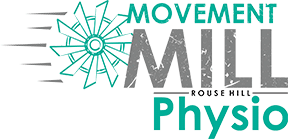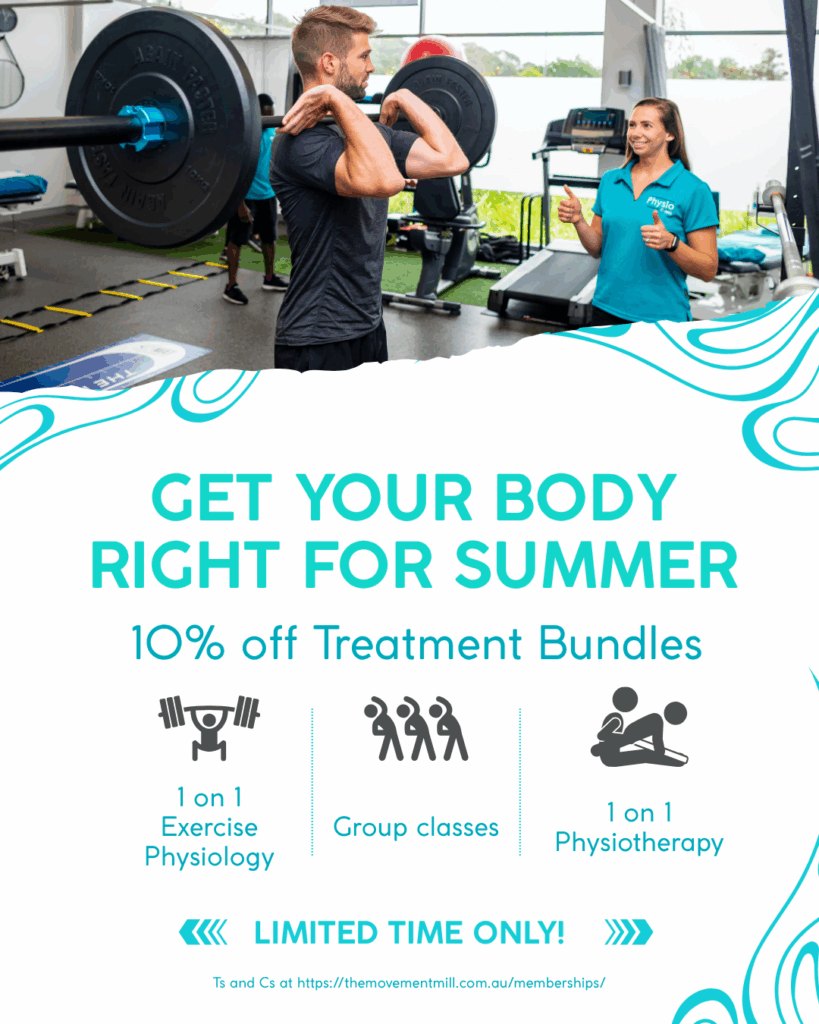Why Rehab Matters for Sydney Athletes
Whether you’re chasing a ball at Centennial Park, sprinting down a rugby field, or enjoying a weekend surf at Bondi Beach, sports injuries can strike anyone. A sprained ankle, torn ligament, or strained muscle doesn’t just cause pain—it sidelines you from the activities you love.
A structured sports injury rehabilitation exercise program is the bridge between injury and full recovery. It’s not just about healing—it’s about rebuilding strength, restoring movement, and returning to your sport with confidence.
[/vc_column_text][/vc_column]
1. Early recovery – restoring movement
- Focus: reducing pain, controlling swelling, and gently reintroducing mobility.
- Techniques: light range-of-motion exercises, gentle stretching, and isometric strength work.
- Goal: protect the injured area while keeping the body moving.
2. Rebuilding strength and control
- Focus: strengthening both the injured area and supporting muscles.
- Techniques: resistance exercises, balance training, and controlled functional movements.
- Goal: improve muscle endurance, coordination, and stability to handle more load.
3. Functional and sport-specific training
- Focus: preparing the body for the demands of your chosen activity.
- Techniques: plyometric drills, agility work, running progressions, or movement patterns specific to your sport.
- Goal: ensure your body is resilient, efficient, and ready for a safe return to competition.
Tailored Rehab Progressions for Common Injuries
Rehab isn’t a one-size-fits-all process. Each injury requires a slightly different approach:
- Ankle sprain → start with gentle mobility, progress to single-leg balance, finish with change-of-direction drills.
- Knee reconstruction → begin with quadriceps and glute activation, build into squats and lunges, then integrate hops and agility tasks.
- Shoulder injury → focus first on controlled range and scapular stability, then progress to resistance band work, and later sport-specific throwing or overhead movements.
Key principles for a safe return
- Progress gradually—avoid doing too much, too soon.
- Listen to your body—mild soreness is normal, sharp pain is not.
- Train the whole body—not just the injured area.
- Include balance, coordination, and agility work.
- Don’t ignore recovery—sleep, hydration, and nutrition all play a role.
- Address mental readiness—confidence is just as important as physical ability.

Sydney-Specific Rehab Advantages
Sydney offers ideal environments for post-sports injury recovery exercises:
- Soft sand runs at Bondi or Manly
- Outdoor gyms in local parks
- Swimming pools for low-impact training
Tip: Adjust for heat, humidity, or wet conditions when training outdoors.
When Can You Return to Sport?
Before stepping back into full training or competition, make sure you’ve ticked the key boxes:
- Strength levels close to your uninjured side
- Quality movement under speed and load
- Ability to complete sport-specific drills without pain
Confidence in your body’s resilience
Conclusion
Recovering from a sports injury takes more than rest—it requires a clear plan, structured exercises, and professional guidance. With the right program, you won’t just return to play; you’ll return stronger, more balanced, and more resilient than before.
If you’re looking for expert guidance in Sydney, the Movement Mill offers tailored rehabilitation programs designed to help athletes and everyday movers get back to what they love—safely and confidently.
FAQs
How soon should I start rehabilitation after a sports injury?
In most cases, rehab should begin as early as possible—often within a few days of the injury—once swelling and acute pain are under control. Early gentle movement helps speed up healing and prevents stiffness. Always follow guidance from a physiotherapist or exercise physiologist.
How long does a rehabilitation exercise program take?
Recovery time varies depending on the type and severity of the injury. Minor strains may recover in 2–4 weeks, while more complex injuries like ligament tears or surgical repairs may take several months. Your rehab plan will progress in stages to help you return safely.
Do I need a referral to start rehab at The Movement Mill?
No referral is needed. You can book directly with an Exercise Physiologist or Physiotherapist. However, if you have a WorkCover or DVA claim, a referral may be helpful for processing.
Can rehabilitation exercises help prevent future injuries?
Yes. Structured rehab doesn’t just repair the injured area—it improves strength, control, and movement patterns across the entire body. This reduces your risk of re-injury and can even enhance performance.
When can I return to my sport?
You can return once you’ve regained adequate strength, mobility, and confidence, and can perform sport-specific movements without pain. Your clinician will guide you through testing drills to ensure you’re ready and safe to play again.


